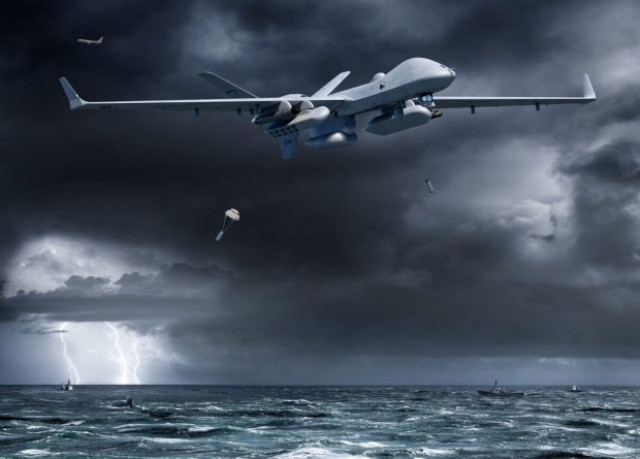The American company General Atomics, together with the US Navy, tested the MQ-9A Block V Reaper unmanned aerial vehicle in an anti-submarine role. According to Defense News, during the tests, the device was used to search for an underwater target that simulates a submarine. The tests were conducted as part of the MQ-9B SeaGuardian maritime patrol drone development project.
Currently, manned aircraft and anti-submarine helicopters are used to search for submarines. Such aircraft drop sonar buoys into the water, which detect underwater objects and transmit information about the position. In addition, the search is conducted with the help of magnetic anomaly detectors on aircraft that are sensitive to magnetic field distortions in the presence of massive metal objects.
During the tests, the MQ-9A drone dropped ten sonar buoys into the water, which measured water indicators, including temperature,and found an underwater target. The information from the buoys was transmitted to the drone, and from there it was relayed to the control center located at the Yuma test site in California. The duration of the tests was three hours. The checks carried out were found to be completely successful.
According to the project, the patrol drone MQ-9B will receive underwing suspension systems for four containers with sonar buoys. In these containers, the device will be able to carry a total of up to 40 buoys of dimension "A" (93 centimeters in length and 12 centimeters in diameter) or up to 80 of dimension "G" (their length is a quarter less). The new drones are planned to be used in conjunction with the P-8A Poseidon coastal patrol aircraft.
Since 2017, the British company BAE Systems, commissioned by the US Defense Advanced Development Agency , has been developing underwater robots that could walk underwater in a group with submarines and search for enemy submarines. New vehicles can be launched through standard torpedo tubes. The vehicles will be equipped with active sonar and underwater communication systems.
Vasily Sychev

